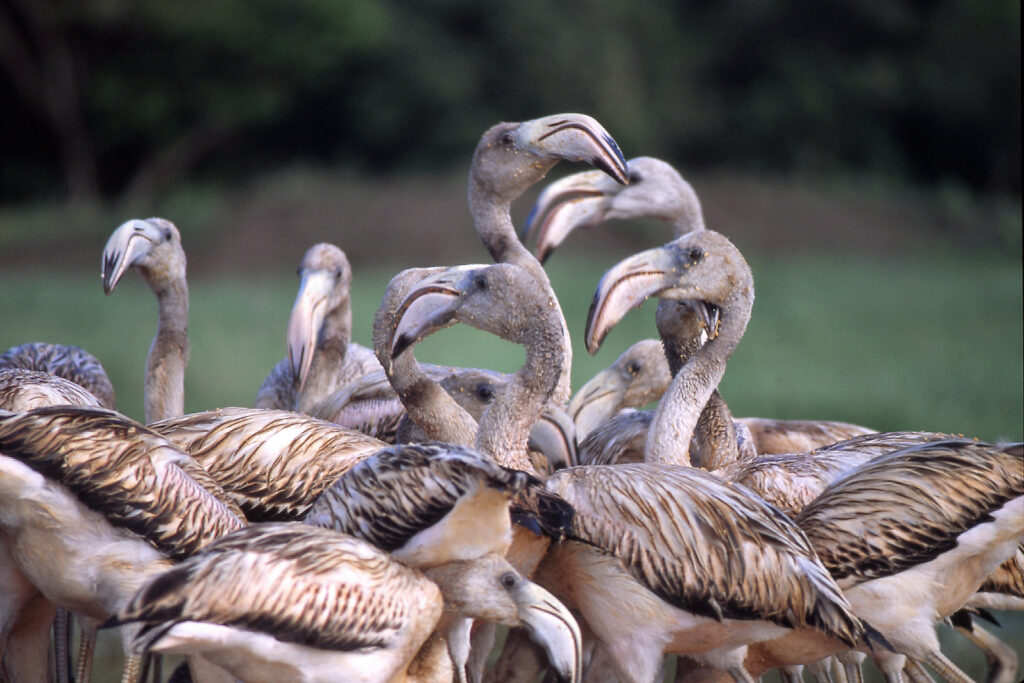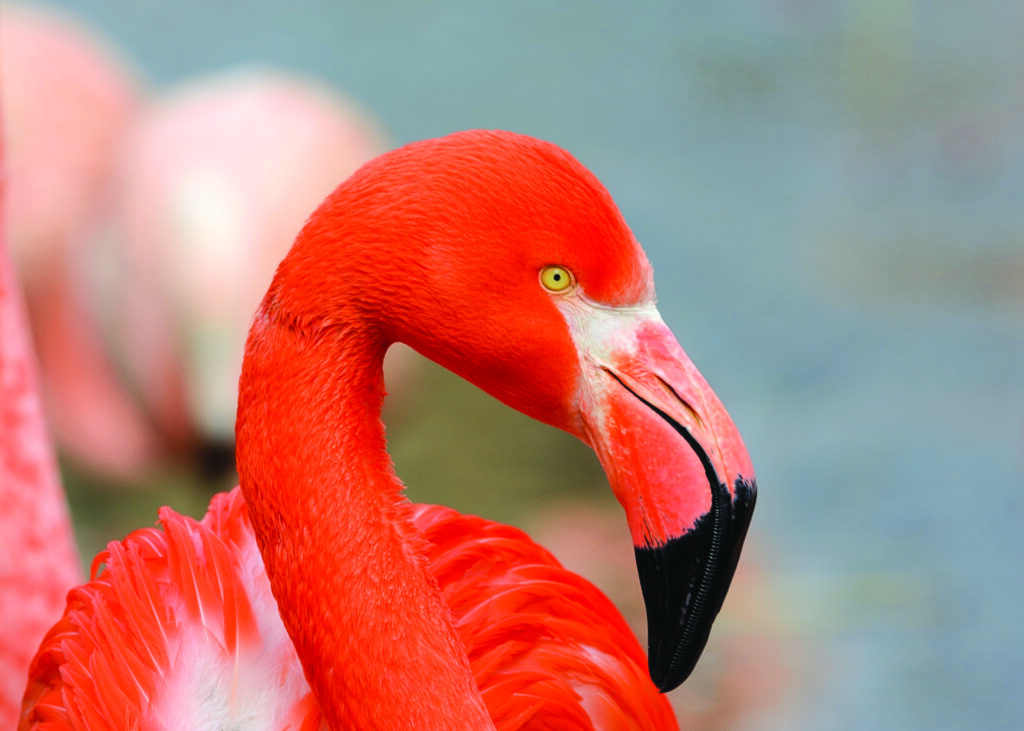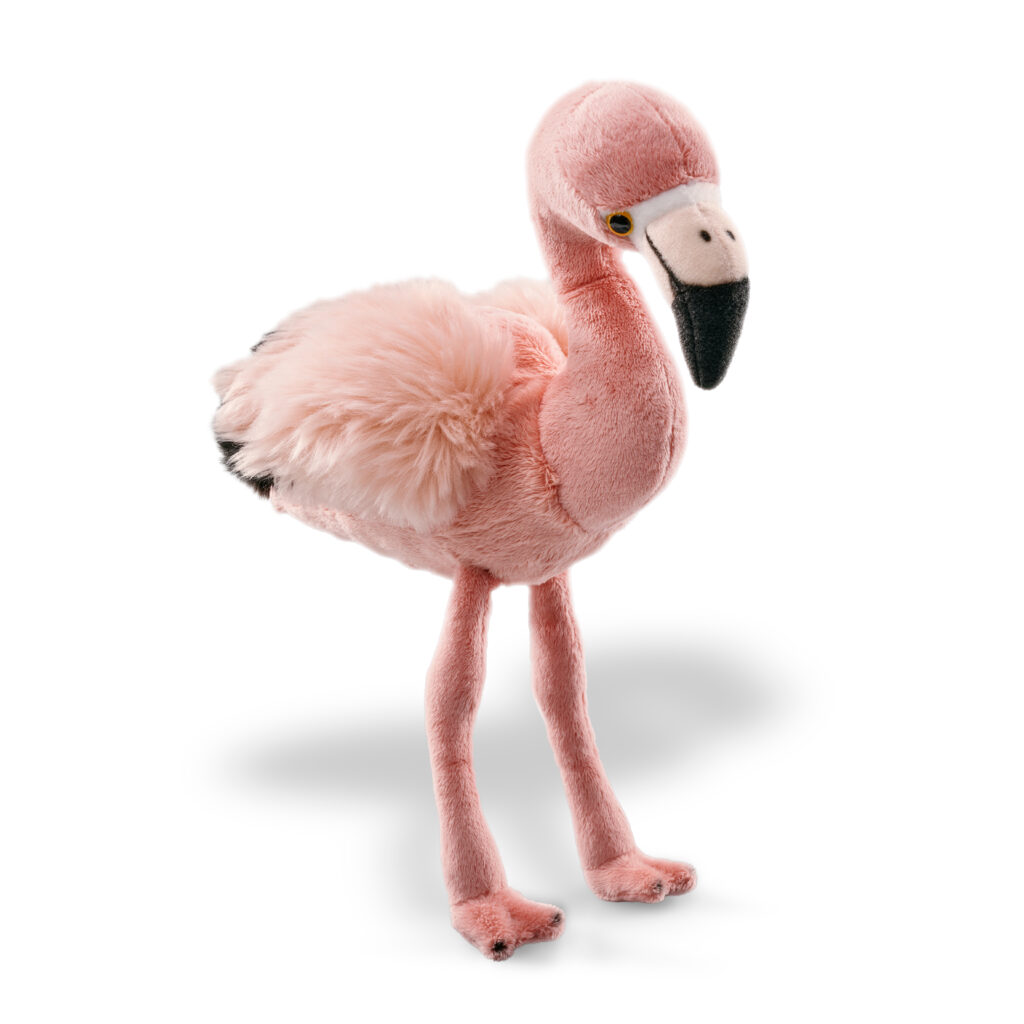Six Flamboyant Flamingo Facts
When you bring wildlife home by symbolically adopting a species you help protect their habitats. Shop the collection at wwf.ca/shop.
WWF-Canada just added four new species to our collection of symbolic adoptions, including the fabulous flamingo. Get to know this unmistakable bird better with our top six flamingo facts.
There are six species of flamingo
The six flamingo species are the greater flamingo, Chilean flamingo, American flamingo, lesser flamingo, Andean flamingo and James’s flamingo. While most flamingos aren’t endangered, the Andean flamingo is listed as Vulnerable and the Chilean, lesser and James’s flamingos are listed as Near Threatened by the IUCN Red List of Threatened Species. Some of their biggest threats include habitat loss and severe droughts due to climate change.
Flamingos aren’t born pink
Flamingos are instantly recognizable for their bright pink feathers, stilt-like legs and long necks. But did you know newly hatched flamingos have dark grey feathers known as downy feathers? It takes several rounds of molting (losing and growing new feathers) for young flamingos to get their characteristic pink color.

They are what they eat
Flamingos absorb pigment from foods that are rich in carotenoids, like algae and brine shrimp. This pigment is then deposited into their feathers as they grow, giving their plumage its famous pink hue. Colour is one of the things flamingos look for when picking a mate because it shows greater access to food. A bright pink flamingo feather will slowly fade to lighter colors after being shed.
Both males and females have sweet dance moves
For many bird species, it’s the males that put grand displays to attract a mate. Flamingo courtship rituals are more egalitarian with both male and female flamingos taking part in a special dance. Like a flash mob, they’ll come together in large groups to show off synchronized dance moves such as head-flagging, wing salutes, twisting, preening, bowing and marching. Most flamingos only stay with their mate for the season which means that this party starts all over again the next year.
A group of flamingos is called a “flamboyance”
Flamingos are social creatures that live in large groups of varying sizes, sometimes gathering by the thousands. These elegant groups are known as a “stand” when they are, well, standing around but is fittingly called a “flamboyance” when they’re dancing.
Flamingos live in some of the saltiest places on Earth
Flamingos live in a wide variety of habitats such as lagoons, estuaries, coastal and inland lakes, and mudflats. These habitats often have harsh conditions, including very salty water, that few other species can thrive in. This works to their advantage as there’s less competition for the tasty crustaceans they prefer to dine on.
Why adopt an American flamingo?
Our adoption kit features the American flamingo which is the only flamingo with wild populations in North America (found in Florida). Your plush purchase helps this long-legged species and others thrive!
Designed with the help of conservation experts, our flamingo plush features unique traits inspired by their wild counterpart such as their distinctive pink feathers, long neck and characteristically down-turned bill that make flamingos so easy to spot. It also features webbed feet that they use to swim, stir up food and run on water before lifting off into the sky.
Visit wwf.ca/shop to explore our collection of more than 45 species. Each adoption kit comes with a true-to-life plush animal, educational poster, personalized adoption certificate, reusable tote bag and a charitable tax receipt.



